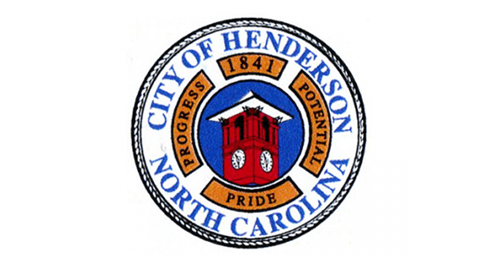As plans for reimagining and redeveloping neighborhoods near downtown Henderson continue, city leaders are considering ways to improve current areas while understanding how best to create new opportunities for growth.
One way may be establishing an urban overlay district, which was explained to City Council members Monday as a way to allow for multifamily housing units in areas where they currently are not allowed.
City Manager Terrell Blackmon told WIZS News in a written statement that the overlay district is just one aspect of the redevelopment work being planned to “jumpstart” the urban redevelopment area, or URA, in the Elmwood area of Henderson. The groundwork being laid now, Blackmon said, is “designed to entice builders/developers to consider new development, as well as infill development in the city of Henderson.”
As Corey Williams, the city’s development services department director, explained, the city has torn down numerous homes that were either abandoned or in disrepair. But when the properties remain vacant, with no growth or development filling in, the state defines that as “blight.”
The UNC School of Government is working on a study to move the URA forward and to help define the area and offer tools to help remove the blight.
That could mean additional code enforcement, but Williams said the city hasn’t unpacked that part of the toolbox yet.
“I think we can balance it out,” Williams told WIZS News Wednesday. “We’ll build more with less land, make our community walkable, safe and friendly and tie everything back to downtown,” he added. And the infill development can be done in a way that it enhances the downtown area and put neighborhoods within walking distance of downtown amenities.
The city also may be able to acquire properties that can be bundled to create larger chunks of continguous land, which could be beneficial for further development.
Most developers, he said, aren’t interested in doing all the infrastructure work needed to develop properties – it’s almost become the work of the city, he said. The city “can do the enforcement, put the pieces together and put it out (there) and market it to developers.”
With guidance from the council and the redevelopment commission, Williams said he sees a bright future for neighborhoods like those in the Elmwood URA.
The School of Government study showed that Henderson needs 3,000 additional housing units to accommodate residents. The Elmwood URA can’t handle that many single-family dwellings, so the overlay district would allow for mixed-use residences, from townhomes and condos to single-family homes. Key to this development is affordability to homeowners, he noted. In a mixed-use plan, there is room for renters and homeowners.
Development of a land use plan and updating the zoning ordinances may be in order as the city continues to look at ways to create neighborhoods in and around downtown. A unified development ordinance is something that Williams said may be in the city’s future. Such an ordinance would be a strategic way to approach development.
At the end of the day, Williams said, it is key to understand what the residents can afford. Single-family homes at $150/square foot may not be realistic. “I think if we can do some things that are affordable, but mixed-use, not just for moderate income…we’ll have a better standard of quality than we have had in the past.”
